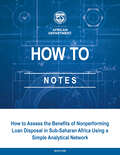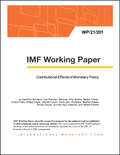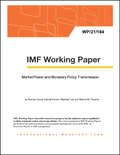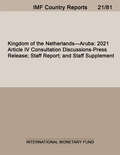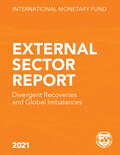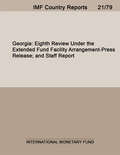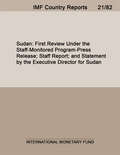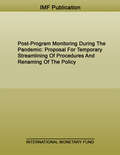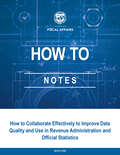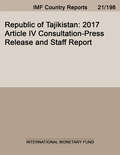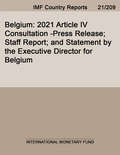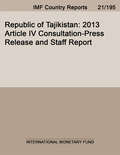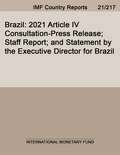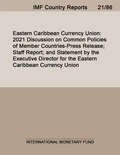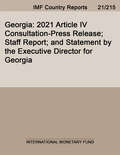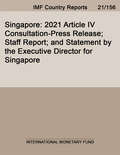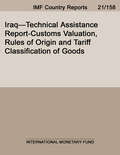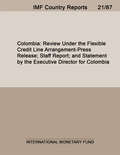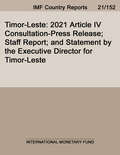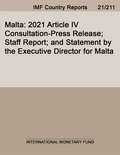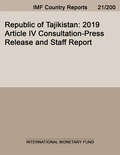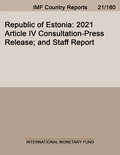- Table View
- List View
IMF-Supported Programs in Indonesia, Korea, and Thailand
by Marianne Schulze-Gattas Timothy D. Lane T. M. TsikataA report from the International Monetary Fund.
IMF: 2013 Article Iv Consultation (Imf How To Notes Ser. #No. 13/37)
by International Monetary FundA report from the International Monetary Fund.
IMF: 2013 Article Iv Consultation (Imf Staff Country Reports #No. 13/37)
by International Monetary FundA report from the International Monetary Fund.
IMF: 2013 Article Iv Consultation (Imf Working Papers #No. 13/37)
by International Monetary FundA report from the International Monetary Fund.
IMF: 2021 Article Iv Consultation Discussions-press Release; Staff Report; And Staff Supplement (Imf Staff Country Reports #Imf Staff No. 97/107)
by International Monetary FundA report from the International Monetary Fund.
IMF: Divergent Recoveries And Global Imbalances (External Sector Report #Imf Staff No. 97/107)
by International Monetary FundA report from the International Monetary Fund.
IMF: Eighth Review Under The Extended Fund Facility Arrangement-press Release; And Staff Report (Imf Staff Country Reports #Imf Staff No. 97/107)
by International Monetary FundA report from the International Monetary Fund.
IMF: First Review Under The Staff-monitored Program-press Release; Staff Report; And Statement By The Executive Director For Sudan (Imf Staff Country Reports #Imf Staff No. 97/107)
by International Monetary FundA report from the International Monetary Fund.
IMF: Proposal For Temporary Streamlining Of Procedures And Renaming Of The Policy (Policy Papers #Imf Staff No. 97/107)
by International Monetary FundA report from the International Monetary Fund.
IMF: Recent Economic Developments (Imf How To Notes Ser. #Imf Staff No. 97/107)
by International Monetary FundA report from the International Monetary Fund.
IMF: Recent Economic Developments (Imf Staff Country Reports #Imf Staff No. 97/107)
by International Monetary FundA report from the International Monetary Fund.
IMF: Recent Economic Developments (Imf Staff Country Reports #Imf Staff No. 97/107)
by International Monetary FundA report from the International Monetary Fund.
IMF: Recent Economic Developments (Imf Staff Country Reports #Imf Staff No. 97/107)
by International Monetary FundA report from the International Monetary Fund.
IMF: Recent Economic Developments (Imf Staff Country Reports #Imf Staff No. 97/107)
by International Monetary FundA report from the International Monetary Fund.
IMF: Recent Economic Developments (Imf Staff Country Reports #Imf Staff No. 97/107)
by International Monetary FundA report from the International Monetary Fund.
IMF: Recent Economic Developments (Imf Staff Country Reports #Imf Staff No. 97/107)
by International Monetary FundA report from the International Monetary Fund.
IMF: Recent Economic Developments (Imf Staff Country Reports #Imf Staff No. 97/107)
by International Monetary FundA report from the International Monetary Fund.
IMF: Recent Economic Developments (Imf Staff Country Reports #Imf Staff No. 97/107)
by International Monetary FundA report from the International Monetary Fund.
IMF: Recent Economic Developments (Imf Staff Country Reports #Imf Staff No. 97/107)
by International Monetary FundA report from the International Monetary Fund.
IMF: Recent Economic Developments (Imf Staff Country Reports #Imf Staff No. 97/107)
by International Monetary FundA report from the International Monetary Fund.
IMF: Recent Economic Developments (Imf Staff Country Reports #Imf Staff No. 97/107)
by International Monetary FundA report from the International Monetary Fund.
IMF: Recent Economic Developments (Imf Staff Country Reports #Imf Staff No. 97/107)
by International Monetary FundA report from the International Monetary Fund.
IMF: Recent Economic Developments (Imf Staff Country Reports #Imf Staff No. 97/107)
by International Monetary FundA report from the International Monetary Fund.
IMF: Recent Economic Developments (Imf Staff Country Reports #Imf Staff No. 97/107)
by International Monetary FundA report from the International Monetary Fund.
IMF: Recent Economic Developments (Imf Staff Country Reports #Imf Staff No. 97/107)
by International Monetary FundA report from the International Monetary Fund.

